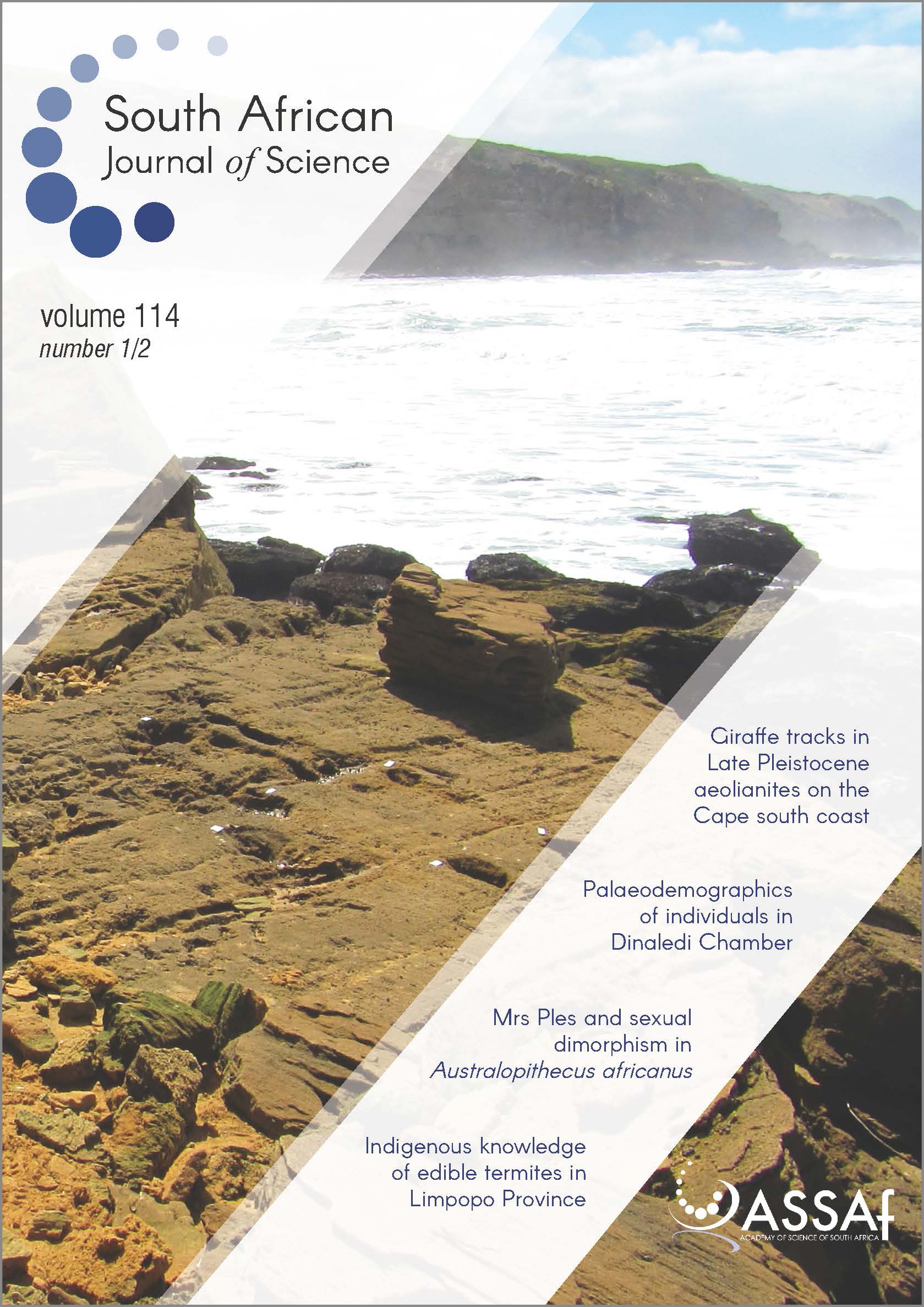Palaeodemographics of individuals in Dinaledi Chamber using dental remains
DOI:
https://doi.org/10.17159/sajs.2018/20170066Keywords:
Homo naledi, life stages, demographic profile, MNI, life historyAbstract
Hominin skeletal remains from the Dinaledi Chamber, South Africa, represent a minimum of 15 individuals of the extinct species Homo naledi. We examined the dental material from this sample in order to assess the life-history stages of individuals in the sample, in particular to determine the minimum number of individuals in the sample as a whole, and within each of six age classes. We found evidence of individuals within every age class: infant, early juvenile, late juvenile, subadult, young adult and old adult. The Dinaledi Chamber sample is notable in comparison to other samples of human, chimpanzee and fossil hominins in that it has a relatively high representation of juvenile remains, as compared to infants and adults. With 15 individuals, the sample size presented by the Dinaledi dental material is too small to test the hypothesis of attritional versus catastrophic accumulation. The data here provide a basis for further investigation of individual associations within this commingled assemblage, and provide an important comparative data set as a basis for the consideration of life history in H. naledi and other extinct hominin populations.
Significance:
- We identified a minimum number individuals so far recovered in the assemblage and document the use of molar eruptions as biomarkers of life-history stages to sort the individuals into age classes.
- We provide a demographic profile of individuals from the chamber and establish a comparative data set for life history in extinct hominin populations.
Published
Issue
Section
License

All articles are published under a Creative Commons Attribution 4.0 International Licence
Copyright is retained by the authors. Readers are welcome to reproduce, share and adapt the content without permission provided the source is attributed.
Disclaimer: The publisher and editors accept no responsibility for statements made by the authors
How to Cite
- Abstract 3544
- PDF 1258
- EPUB 262
- XML 339













.png)